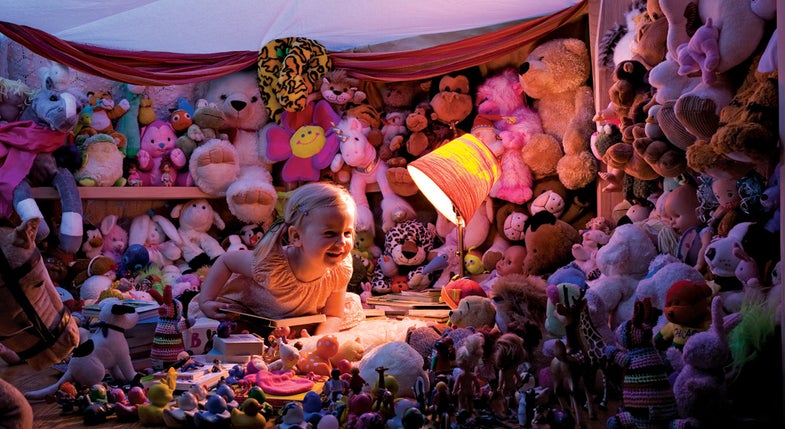Tips From a Pro: Pre-Visualizing Your Lighting Setup
Photographer Chris Strong explains how a little forethought can go a long way

What happens when you cross an energetic toddler with a complicated lighting setup? You may get very cross yourself—unless you prelight, playing with and working out the lighting well before your model arrives.
Chris Strong, a Chicago pro, spent a full day prelighting this portrait of his daughter, just as he does for his commercial assignments. “A prelight day comes into play when you’re working on a shoot that requires exacting light. You rough in your strobes to assure yourself that everything will go smoothly when real shooting starts,” he explains.
Many studio photographers build a prelighting day into the expenses for a shoot: So important is the lighting that clients pay for time spent adjusting, finessing, and playing with light. “A prelighting phase is essential for at least two reasons,” says Strong. “First, it blocks out a predetermined period for you to play, make mistakes, and try new lighting schemes. Second, it lets you work without an impatient subject hovering nearby.”
As for this engaging portrait, “It started with a thump in the night,” he says. “My wife and I peeked into our 3-year-old’s room and found her in the closet ‘reading’ aloud to a captive audience of stuffed animals. In this picture, we simply wanted to recreate it.” Since the little girl lacked the patience to sit while he experimented with light (and what model wouldn’t?), a day of prelighting was the only way to go.
During prelighting, Strong’s concerns included:
Light Placement. After much experimentation, he arrived at one bright spotlight throwing attention on the child and her expression. The source was a Morris AC slave flash housed in the lampshade; ironically, the output of this $40 accessory determined the power for his ultra-expensive Profoto fill lights.
Relative Light Intensity. Balanced to the Morris slave flash, Strong’s fill lights created enough light to bring out detail, but not so much as to rob the scene of its snug feel.
Color Temperature. By throwing a warming gel on his main light and cooling gels on the background fill, Strong created a cozy pool of warmth center-frame that draws attention to his daughter. “I like contrasting CTO and CTB gels whenever possible,” he says.
Strong’s advice? Elevate your photography by focusing intensely and exclusively on lighting—make that prelighting.

Kris Holland/Mafic Studios
After a day of prelighting, Chris Strong (with his wife’s help) was finally ready for daughter. Above her hovered a 7-foot F.J. Westcott Octabank softbox (A) that was illuminated by a Profoto Pro-7 flash head. The head was powered by Profoto Pro 6 2400 Ws power pack (B). To her right, Strong set up a 28-inch Small Profoto strip light** (C)**, which he gelled blue with a Rosco CTB acetate sheet. His main light was an inexpensive Morris AC slave flash threaded into the socket of the reading lamp on the floor (D). So its light would contrast with the overall blue cast of the scene and create a pool of warmth around the child, he gelled the slave flash with a Rosco CTO orange gel. Finally, because that light was in so close, Strong dimmed it down with a 1-stop neutral-density gel. He fired the strobes using a shoe-mount PocketWizard Plus II flash trigger** (E)**.